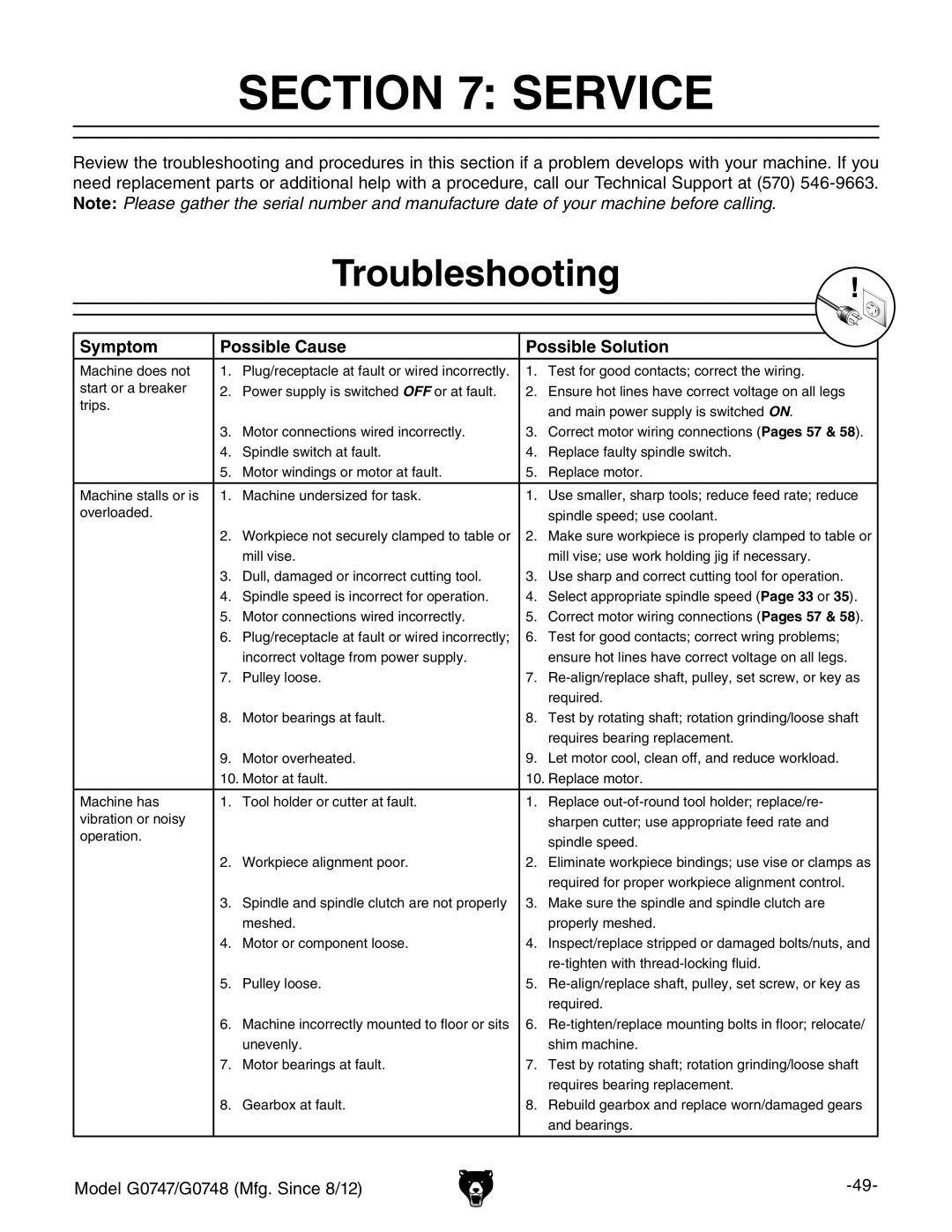G0747 and G0748 specifications
The Grizzly G0747 and G0748 are advanced metal lathes designed for precision machining and versatility, catering to both amateur machinists and professional workshops. These machines stand out in the realm of metalworking equipment, thanks to their robust construction and innovative features.One of the key attributes of the G0747 and G0748 is their solid cast iron construction, which provides excellent vibration dampening during operation. This enhances stability and precision, crucial for producing high-quality machined parts. Equipped with powerful motors, both models are capable of handling a wide range of materials, from aluminum to harder metals like steel.
The G0747 features a variable speed drive system, allowing users to adjust the spindle speed based on the project at hand. This flexibility is beneficial for tasks that require different cutting speeds, enabling machinists to optimize cutting performance and tool longevity. Its variable speed output ranges, alongside smooth torque delivery, make it ideal for intricate turning operations.
On the other hand, the G0748 includes an advanced digital readout (DRO) system. This feature provides real-time feedback on the machine's position and speed, significantly improving accuracy in measurements during machining tasks. The DRO system allows operators to set precise limits and keep track of their progress, essential for complex projects where exact dimensions are critical.
Both lathes are equipped with a user-friendly interface, making them accessible for beginners while still offering advanced functionalities that seasoned professionals appreciate. They include multiple tooling options, allowing for an expansive range of machining techniques including turning, threading, and drilling.
Moreover, the G0747 and G0748 come with a comprehensive assortment of accessories, such as different types of chucks and tool holders, which further extends their capabilities. The ease of changing tooling and quick setup times are significant advantages for shops aiming for efficiency and versatility in their operations.
In conclusion, the Grizzly G0747 and G0748 metal lathes are exemplary units that balance power, precision, and user-friendliness. Their advanced features, such as variable speed capabilities and digital readouts, equip machinists with the tools necessary to produce exceptional work. Whether for hobbyists or industrial applications, these lathes are built to meet a variety of machining needs with impressive performance and reliability.

